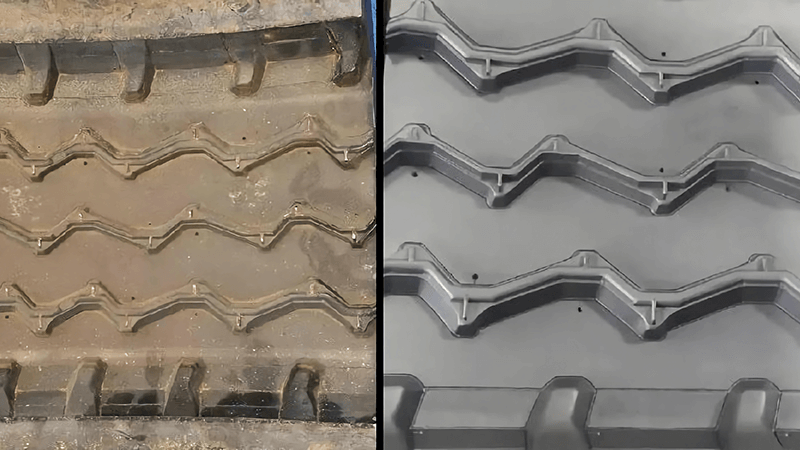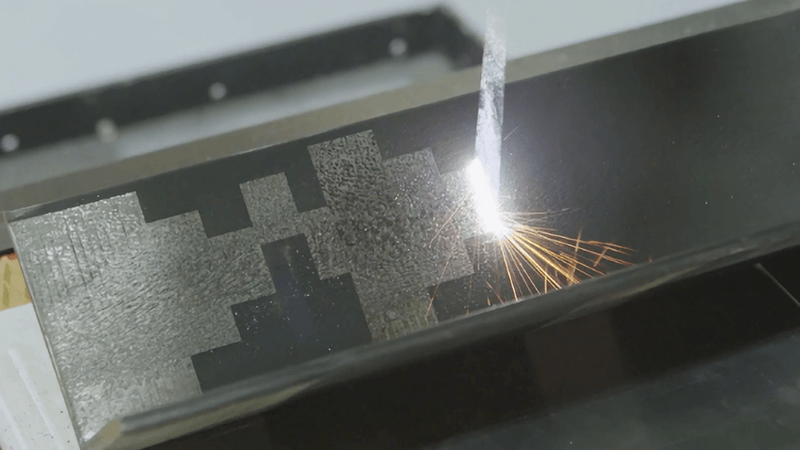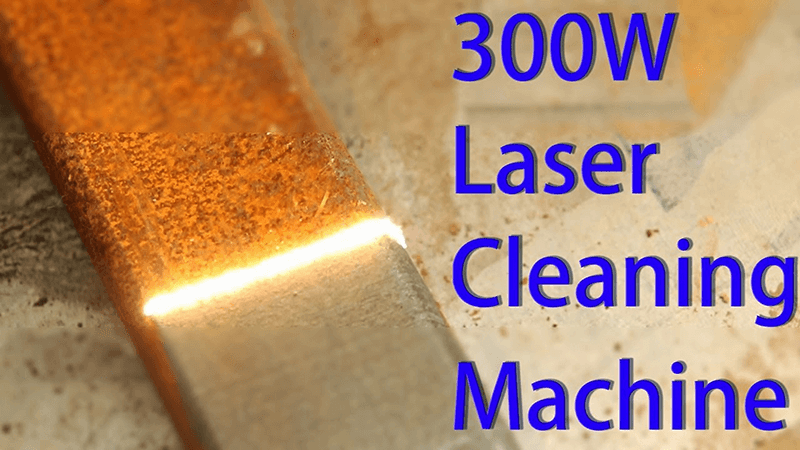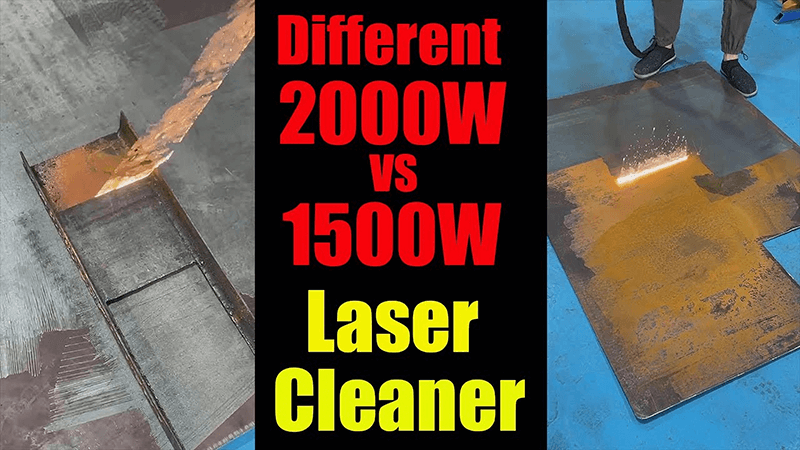When it comes to removing coatings, many industries struggle between speed, precision, and safety. Traditional methods like sanding and chemical stripping are messy and inconsistent. Laser cleaning, however, offers a cleaner, smarter, and more sustainable way to remove paint and coatings efficiently.
Laser paint removal is one of the most advanced and precise methods for stripping coatings without damaging the substrate. It uses focused laser energy to vaporize paint or rust, leaving the base material untouched.
The shift to laser technology marks a turning point for industries seeking sustainable and accurate surface preparation. In this article, I’ll share my insights from Kirin Laser — a leading supplier of laser cleaning and stripping machines — and explore why laser systems have become the go-to solution for paint removal and surface treatment.

Has anyone ever used a laser stripper to remove varnish and paint?
Removing paint or varnish has always been a headache for industrial users. Many clients have tried chemical agents or mechanical abrasion, but those methods often leave residues or damage the surface underneath. This is where laser strippers stand out. They don’t rely on solvents or friction — they rely on light.
Yes, laser strippers are widely used in industries to remove varnish, paint, and coatings efficiently without damaging the substrate. Pulsed laser systems are especially effective because they deliver high-intensity bursts that lift off coatings cleanly.
The Science Behind Laser Paint Removal
Laser paint removal works through a process called laser ablation1. When a high-energy laser beam hits a coated surface, the paint layer absorbs the light energy, which causes rapid heating and evaporation. The underlying material, which reflects most of the light, remains safe.
| Feature | Traditional Method | Laser Stripping |
|---|---|---|
| Chemical Use | High | None |
| Surface Damage | Likely | Minimal |
| Environmental Impact | Hazardous Waste | Clean Process |
| Precision | Low | High |
Why Users Choose Laser Stripping
Many of our clients, including those in aerospace, automotive, and manufacturing2, have switched to laser stripping due to its precision and repeatability. The biggest benefit is control — the operator can adjust power, frequency, and focus for different materials. For instance, delicate surfaces like aluminum or carbon fiber can be cleaned without deformation.
A client in the aerospace sector once needed to remove paint from aluminum parts. Using a pulsed laser cleaning system, we achieved perfect paint removal while keeping the metal’s structure intact. No chemical residue, no distortion — just clean, ready-to-paint surfaces.

What would be a good brand of continuous laser for rust/paint stripping?
When clients ask about continuous laser systems, I always emphasize that the right laser depends on the application. Continuous-wave (CW) lasers emit a constant beam of energy, making them ideal for large-scale cleaning and heavy-duty rust removal. However, they are not always the best for delicate jobs.
A good continuous laser brand for paint or rust stripping should offer stable beam quality, strong cooling systems, and adjustable power settings. At Kirin Laser, our continuous-wave cleaning systems are built for endurance and consistent performance in industrial environments.
Choosing Between Pulsed and Continuous Lasers
| Parameter | Pulsed Laser | Continuous Laser |
|---|---|---|
| Beam Output | Short bursts | Constant beam |
| Heat Transfer | Low | Higher |
| Suitable for | Sensitive surfaces | Heavy-duty cleaning |
| Precision | High | Moderate |
While continuous lasers perform well for steel structures, ship hulls, and pipelines, pulsed lasers are better for paint stripping on aircraft, vehicles, or molds where precision is key. Our clients who work in marine or energy sectors often prefer CW systems because they clean rust over large areas quickly.
Kirin Laser’s Continuous Systems
At Kirin Laser, we manufacture both pulsed and continuous-wave cleaning machines3. For rust or thick paint stripping, our Kirin CW Laser Cleaner Series4 delivers stable performance and efficient heat control. It’s durable, easy to operate, and designed for long working hours — perfect for factories that require fast and consistent cleaning cycles.

How to Use Laser Cleaning Machine for Paint Stripping?
Using a laser cleaning machine may sound complex, but once you understand the steps, it’s straightforward and safe. Whether you’re a distributor or an end-user, mastering the operation process ensures both efficiency and safety.
To use a laser cleaning machine for paint stripping, adjust the power, focus, and speed based on the surface type. Start with lower power, test on a small area, and gradually increase settings until the paint layer ablates evenly.
Step-by-Step Guide
1. Surface Preparation
Make sure the target surface is clean from oil, grease, or loose contaminants. This ensures the laser beam can focus effectively on the coating.
2. Parameter Adjustment
Set the laser’s power and pulse frequency according to the paint type. For metal substrates5, a higher frequency may work better, while composite materials need lower intensity to avoid heat buildup.
3. Safety First
Always use protective eyewear and proper ventilation. Laser cleaning emits light and micro-particles that should be handled safely.
4. Cleaning Process
Move the handheld laser head steadily across the surface. A slow and consistent pace ensures uniform paint removal. In pulsed systems, each laser pulse ablates a thin layer, making it easy to control.
| Step | Action | Purpose |
|---|---|---|
| 1 | Adjust focus distance | Maximize beam accuracy |
| 2 | Set power levels | Match coating thickness |
| 3 | Test on small area | Prevent damage |
| 4 | Clean in linear motion | Ensure even stripping |
Real-World Application
One of our industrial partners used our Kirin Pulse Laser Cleaner 2000W6 to strip paint from production molds. Previously, the molds required chemical soaking, which was time-consuming. After adopting laser cleaning, they cut cleaning time by 60%, reduced chemical waste, and improved production quality.

What is laser paint removal?
People often hear about laser cleaning but may not understand the science behind it. Laser paint removal is not magic — it’s advanced physics at work. It’s about precision and control.
Laser paint removal is the process of using a focused laser beam to remove paint, coatings, or contaminants from a surface through controlled ablation. It eliminates mechanical or chemical methods, reducing damage and waste.
How Laser Ablation Works
The laser beam targets the coating layer and heats it rapidly. The paint absorbs the energy, vaporizes, and detaches from the surface. Because the pulse duration is so short, the underlying material doesn’t heat up significantly. This is why pulsed laser systems7 are preferred — they provide high peak power but minimal thermal impact.
| Component | Function |
|---|---|
| Laser Source | Generates the beam |
| Fiber Cable | Transfers energy |
| Handheld Head | Directs the beam |
| Control Panel | Adjusts parameters |
Benefits of Laser Paint Removal
- No Chemical Waste – Unlike solvents, it doesn’t pollute water or air.
- Surface Protection – The substrate remains undamaged.
- Precision Control – Perfect for delicate materials like aluminum or titanium.
- Automation Ready – Can be integrated with robotic arms for industrial production.
At Kirin Laser8, we design our machines with these principles in mind. Every system we build focuses on performance, safety, and adaptability for different materials.

Is laser paint removal better than sanding?
This is one of the most common questions we receive from clients. Sanding has been around for centuries, but it’s slow, inconsistent, and labor-intensive. Laser cleaning, in contrast, is faster, cleaner, and much more precise.
Yes, laser paint removal is better than sanding in most industrial applications. It offers higher precision, cleaner operation, and less environmental impact while preserving the integrity of the base material.
Comparing Sanding and Laser Cleaning
| Factor | Sanding | Laser Paint Removal |
|---|---|---|
| Efficiency | Moderate | High |
| Dust Generation | High | None |
| Reusability | Manual effort | Automated |
| Surface Integrity | May scratch | No damage |
| Cost Over Time | High | Lower long-term |
The Kirin Laser Advantage
In one project, our client needed to refurbish aluminum components for aerospace use. Sanding was leaving micro-scratches and reducing part lifespan. With our pulsed laser cleaner9, we achieved full paint removal with no mechanical stress. The client not only saved rework costs but also improved quality control.
The environmental advantage10 is also clear. Sanding produces large amounts of dust, while laser cleaning generates minimal residue. This helps companies meet sustainability goals and comply with stricter environmental regulations.

Conclusion
Laser paint removal and stripping11 are not just trends — they represent the future of surface treatment. Compared to traditional methods like sanding or chemicals, laser cleaning offers unmatched precision, safety, and efficiency. From delicate aerospace parts to heavy industrial components, laser systems adapt to every need.
At Kirin Laser, we believe “Precision in Every Beam” is more than a slogan — it’s a promise. Whether you’re cleaning, welding, or marking, our machines are built to help industries work smarter, cleaner, and safer. The evolution of laser cleaning has just begun, and we’re proud to lead the way.
-
Understanding laser ablation is crucial for grasping the efficiency of laser paint removal techniques. ↩
-
Explore how these industries benefit from laser paint removal for precision and efficiency. ↩
-
Explore this link to understand the advantages of each type of laser cleaning machine for various applications. ↩
-
Discover the unique features of the Kirin CW Laser Cleaner Series that make it ideal for efficient rust and paint removal. ↩
-
Explore this link to learn effective techniques for laser cleaning on metal substrates, ensuring optimal results and safety. ↩
-
Discover the advantages of the Kirin Pulse Laser Cleaner 2000W, a powerful tool that enhances efficiency and reduces waste in industrial cleaning. ↩
-
Explore this link to understand how pulsed laser systems enhance efficiency and precision in various industrial applications. ↩
-
Discover how Kirin Laser's innovative systems enhance performance, safety, and adaptability in laser paint removal, setting them apart in the industry. ↩
-
Explore this link to understand the technology behind pulsed laser cleaners and their benefits in various applications. ↩
-
Discover the significant environmental benefits of laser cleaning, including sustainability and compliance with regulations. ↩
-
Find the best laser cleaning machine and laser cleaning solutions from Kirin Laser, clicking this link to get all your needs. ↩





